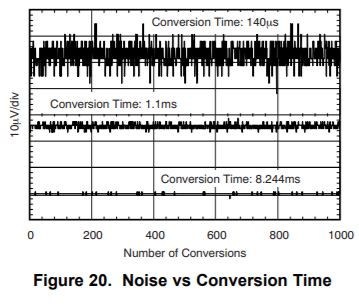Other Parts Discussed in Thread: INA220
Hi team,
My customer is using INA226 to replace INA220. Here's one question:
Previously when using INA220, they set conversion time to 532us (table 4 on INA220 datasheet), which has 12 bit resolution & 1 sample point.
Now in INA226 datasheet table 8, they want to set conversion time to 588 us.
They want to understand what kind of resolution on INA226 when conversion time set to 588us. Is it also 12 bit resolution & 1 sample point?
Thanks!


